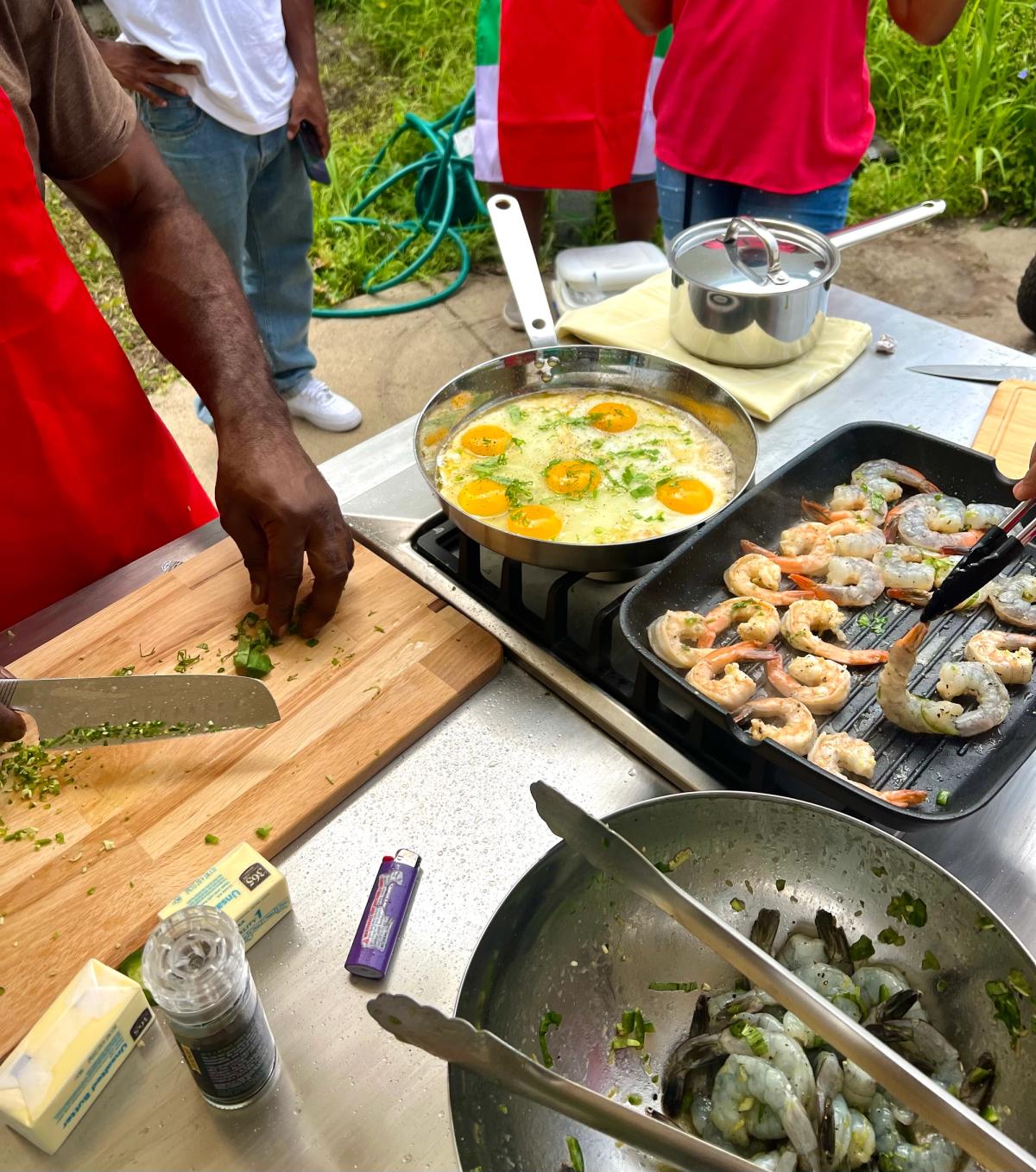Architect of Change: Justin Brazier Brings Community Kitchens to Boston
MIT Architecture graduate student and 2022 Design Fellow Justin Brazier leverages his passion for food and intimate knowledge of local communities to uplift underserved neighborhoods in Boston. Inspired by his Haitian heritage, Brazier tackles urban landscape challenges in Mattapan and Dorchester by bringing portable community kitchens to urban farms, fostering food security and supporting livelihoods.
By Adelaide Zollinger
Aug 25, 2023
Justin Brazier, a graduate student in the Department of Architecture at MIT and a 2022 design fellow at the MIT Morningside Academy for Design (MAD), spent his life in the Boston area. For years, he has dedicated himself to serving local communities, leveraging his design and architecture skills to uplift underserved areas, and make them more vibrant and sustainable. His most recent project has brought portable community kitchens to community farms and gardens in Boston’s Mattapan and Dorchester neighborhoods, boosting livelihood, and educating people around produce and food security.

2022 Design Fellow Justin Brazier tackles urban landscape challenges in Boston by fostering food security in underserved areas.
Image: Jodi Hilton for MIT News
Mattapan is a central hub for the Haitian community in Boston with one of the highest densities of Haitian Americans in the country, whose traditions, language, and cuisine, imprint a unique identity on the neighborhood. The cultural exchange between Haitian immigrants and existing communities made Mattapan a diverse and vibrant area, but it is grappling with the consequences of historical discriminatory practices such as redlining. “It’s developing now, but the square can sometimes be dangerous to walk through because of the lack of crosswalks and it being a central access point into the city from the south shore. There are also things like public transportation, school system resources, affordable housing issues that could be alleviated with more support from the City. The upkeep of areas like Mattapan and Dorchester isn’t on par with the greater Boston area,” observes Brazier, adding that these areas also have food deserts, with communities depending on small shops and corner stores to fill the gap.
Brazier was introduced to architecture through a series of professors in his undergraduate years at MassArt. “They said it would be a good introduction to the design that has an impact on physical environments,” Brazier recalls. It led him to his graduation project — a new development proposal for Mattapan Square — which introduced him to a great number of people in the local community who were excited to see changes but didn’t always know how to “represent their ideas.” After graduating, Brazier sought to address the very fabric of the community:

Brazier’s Haitian heritage has been both an inspiration and motivation in bringing food sovereignty to Boston's Mattapan and Dorchester areas.
Image: courtesy of Justin Brazier
In the course of his work, Brazier met CJ Valerus, an urban farmer, chef, and designer. “He’s a real close friend of mine and has been like a mentor ever since. He knows a lot of people in the neighborhood and has really tapped into the urban farming community.” Together, they have made proposals to reclaim vacant lots overgrown with weeds to be turned into urban farms, combating food insecurity and beautifying areas.
remarks Brazier. In collaboration with many stakeholders including H.E.R.O. Nurturing Center, FarmCollab, MassArt Graduate students, and LBGO architect Wyly Brown — whom Brazier worked with, a wooden greenhouse was built in the Geneva Avenue Community Garden in Boston. The project offers a variety of food sources, such as community growing beds and trees bearing Asian pears, peaches, medlars, and blueberries. The greenhouse serves as a year-round facility for both growing and producing seedlings benefiting local gardeners, and the space is utilized for educational purposes and community gatherings.
Urban food production has since become a cornerstone of Brazier’s work, which acknowledges the central role of food in society. Over the summer of 2023, in collaboration with Calvin Zhong, Narah Deeb, CJ Valerus, and support from his advisor Professor Sheila Kennedy, their mobile community kitchens were deployed across locations in Mattapan and Dorchester. The vision aims to establish productive and inviting communal spaces, hubs where people can cook the food they grow, fostering social bonds. These spaces are not limited to local farmers, but open to the community at large, encouraging shared cooking and a sense of belonging:
explains Brazier. The project was commissioned by the city of Boston’s Mayor’s Office of New Urban Mechanics (MONUM) under the Public Space Invitational program, and received widespread support and backing from MIT.
The kitchens are primarily built with wood, stainless steel and some off-the-shelf elements such as sinks, and stovetop spots on top of modified wheelbarrows. The addition of a freshwater container and a small propane tank make it as independent as possible. Public programming of community events accompanying the project illustrates a holistic approach to neighborhood revitalization efforts. Overlapping with a lot of initiatives happening around MIT, the project received funding from the Institute’s Community Service fund (CSF), and PKG (the Priscilla King Gray Fellowship), which promotes community work outside of MIT. The team is currently working on gathering additional funding to create even more kitchens and hopes to find adequate winter storage to make sure they’ll be used over the years.
Being part of MIT MAD’s very first fellowship cohort held special significance for Justin. In his words, it offered him the freedom to allocate more time to his community projects, and he gained valuable insights from experienced advisors within the program, such as Founding Director John Ochsendorf, Associate Director Maria Yang, and Administrative Director Marion Cunningham, who all provided knowledge about navigating institutional processes at MIT. The fellowship's community-oriented approach through regular meetings allowed him to connect, share ideas, and learn from his peers, allowing for personal development.
Brazier’s work emphasizes the importance of design and architecture in bridging urban disparities and uplifting identities. He impacts communities by helping residents navigate the complexities of city planning, often through small scale design projects. His work exemplifies how seemingly minor design efforts can be catalysts for significant change. “You can make a huge difference. It's what I found between undergrad and grad school, doing these kinds of small projects with people in the area,” observes Brazier before concluding:
Featured People
Related News
Related Events

Tomorrow’s Designers, Designing Today

The Power of Design

